Brussels Griffon Dog: Complete Guide to Breed, Care & Traits
The Brussels Griffon is a small dog breed known for its unique, expressive face and lively personality. Originating from Brussels, Belgium, this toy dog has a lot of charm packed into a compact body. Brussels Griffons are affectionate and smart companions that thrive on close interaction and attention from their owners.
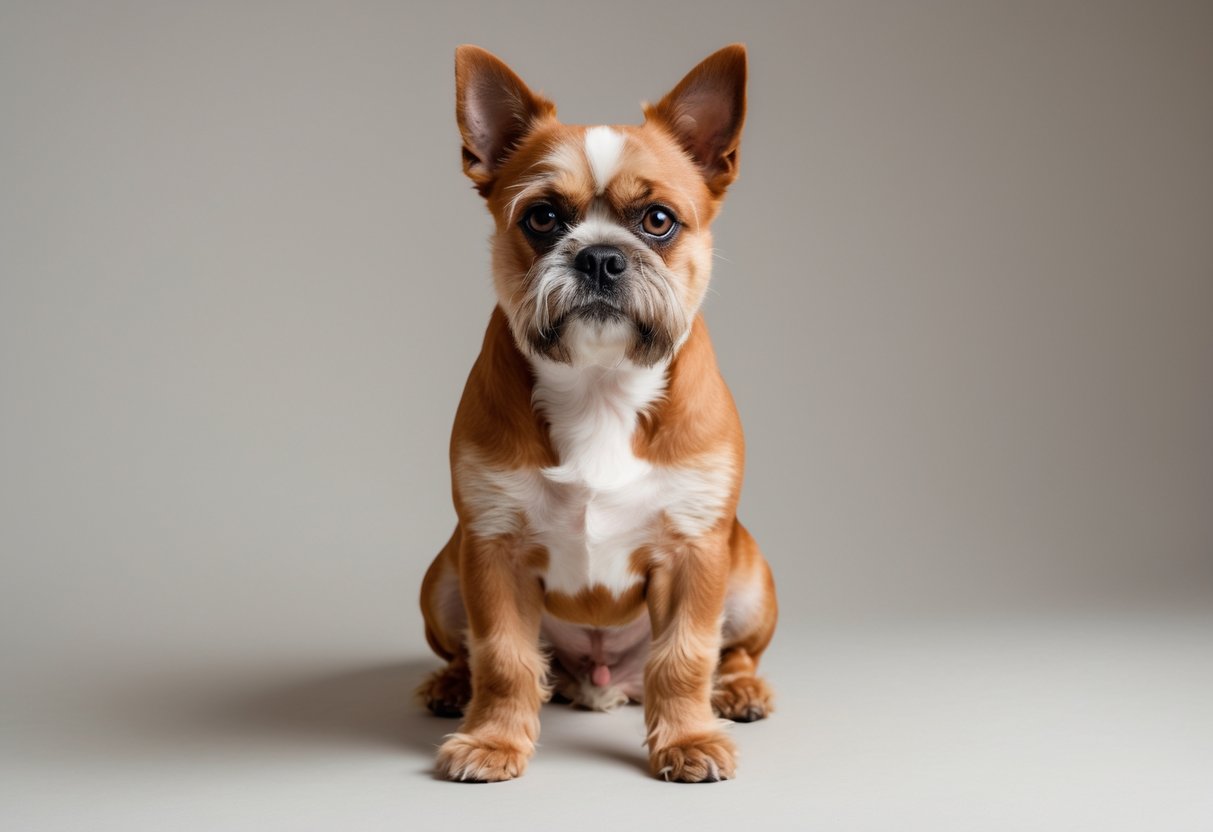
Despite their small size, they have strong, playful energy and enjoy being part of the family. This breed forms strong bonds, often choosing a favorite person but still welcoming attention from others. Their grooming needs are moderate but require daily care to keep their coat healthy.
Understanding the Brussels Griffon’s temperament, care needs, and history helps potential owners decide if this breed suits their lifestyle. This breed suits those ready to give time and patience for training and socialization, making it a great companion for many dog lovers.
Key Takeways
- Brussels Griffons are affectionate dogs that need close human interaction.
- They require daily grooming and moderate exercise.
- This breed fits owners who can provide time for training and companionship.
Brussels Griffon Dog Breed Overview
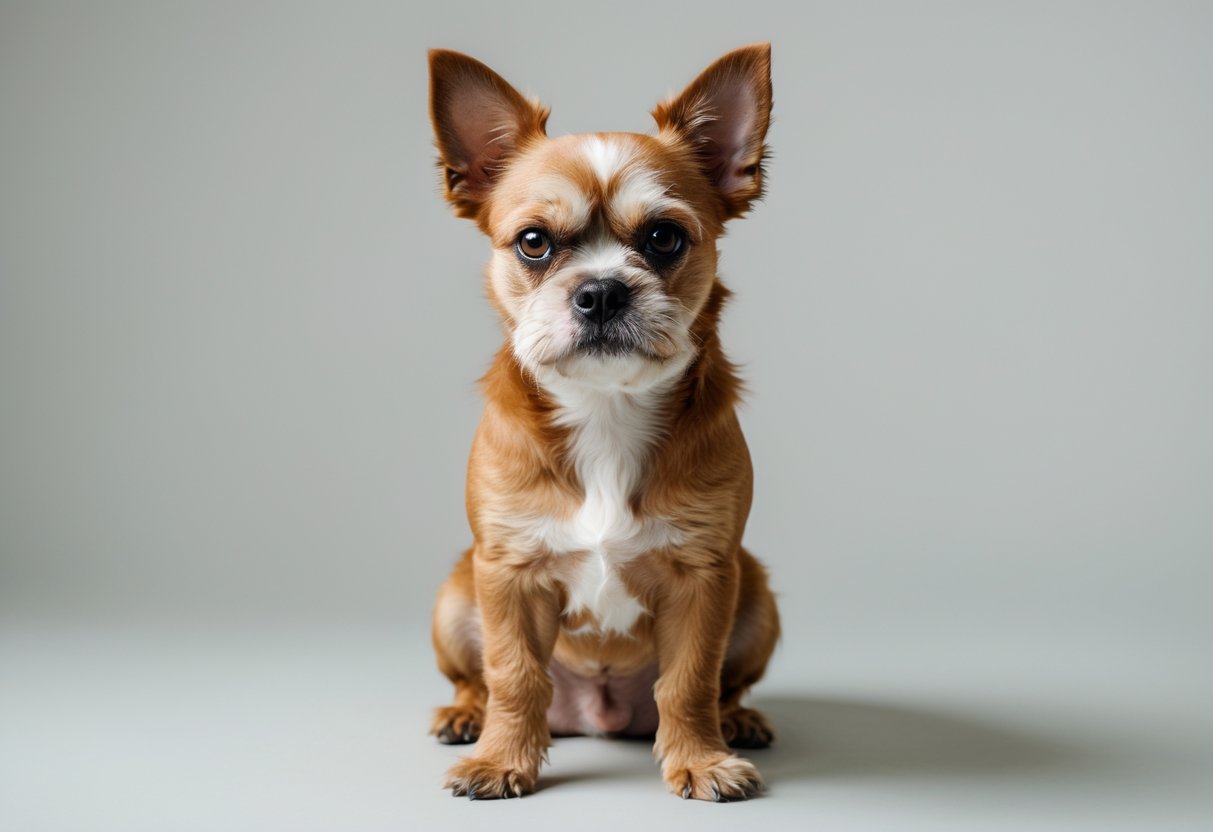
The Brussels Griffon is a small companion dog with distinct physical traits recognized by major kennel clubs. This breed comes in specific colors and coat types that affect its appearance and care. Its breed standards guide owners and breeders to maintain these traits consistently.
Physical Characteristics
The Brussels Griffon is a compact dog that usually weighs between 8 and 10 pounds. It stands about 7 to 10 inches tall at the shoulder. The breed is known for its round head and large, expressive eyes that give it an alert, intelligent look.
This dog has a sturdy, square-shaped body and a short tail. Its face often appears flat with a short nose, adding to its unique expression. Despite its small size, the Brussels Griffon is active and energetic, suited for companionship in both city and suburban homes.
Breed Recognition and Standards
The Brussels Griffon is recognized by the American Kennel Club (AKC) and the Fédération Cynologique Internationale (FCI). Both organizations classify it as a toy breed, highlighting its role as a companion dog.
Breed standards specify the ideal size, shape, temperament, and movement for show and breeding purposes. They also describe the breed’s friendly, alert, and playful nature. These standards help preserve the Brussels Griffon’s heritage and ensure the dogs meet health and temperament guidelines.
Common Colors and Coat Types
The Brussels Griffon has two main coat types: rough coat and smooth coat. The rough coat is wiry and dense, requiring regular grooming to prevent mats. The smooth coat is short and glossy, easier to care for but less common.
Common colors include red, black-and-reddish-brown, black and tan, and solid black. Each color has a standard shade range accepted by breed clubs. Coat type and color influence grooming needs and overall appearance, making them important for potential owners to consider.
History and Origin
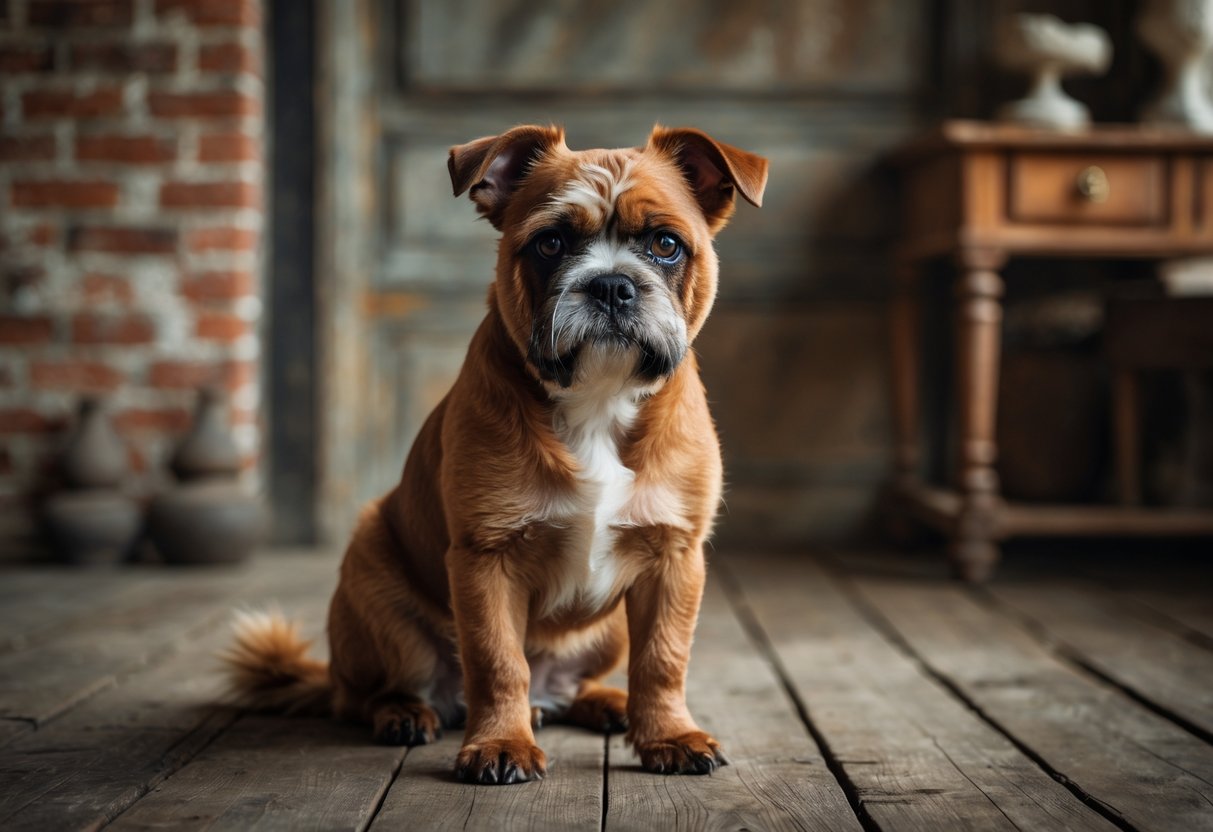
The Brussels Griffon has a clear history rooted in Belgium, shaped by specific breeds and purposeful breeding. Its development closely connects to the city of Brussels and blends traits from several small European dogs. This background explains the breed’s distinctive look and personality today.
Development in Brussels
The Brussels Griffon was developed in the 19th century in Brussels, Belgium. Originally, it was bred to control rats and other vermin in stables. This practical role required a small, alert dog with a strong hunting instinct.
Breeders selected dogs that were tough but also showed intelligence and a lively character. Over time, the breed’s unique features, such as its expressive face and beard-like whiskers, became more defined.
Brussels Griffons were named after the city where they were bred. They were recognized as a distinct breed by various dog clubs in the early 1900s, gaining fame in Europe and later in America.
Influence of Ancestor Breeds
The breed’s appearance and traits come from crossing several small dogs. One important ancestor was the Affenpinscher, a rough-coated terrier-like dog from Germany. The Affenpinscher contributed the Griffon’s lively personality and rough coat texture.
Other key contributors include the English Toy Spaniel and the Pug. These dogs influenced the Griffon’s compact body, flat face, and large, expressive eyes. The mix of these breeds gave the Brussels Griffon a distinct “monkey-like” expression.
This combination of breeds was intentional to balance hunting ability with charm, leading to a small dog that handled vermin well but was also suitable as a pet.
Rise as a Companion Dog
Although bred for work, Brussels Griffons soon caught the attention of European nobility and artists. Their expressive faces and playful nature made them popular companions in upper-class homes.
By the early 20th century, the breed was accepted by the American Kennel Club. It became known more for loyalty, intelligence, and its lively personality than for the original rat-catching job.
Today, the Brussels Griffon is kept almost entirely as a companion dog. It is especially valued for the bond it forms with owners and its alertness despite its small size.
Personality and Temperament
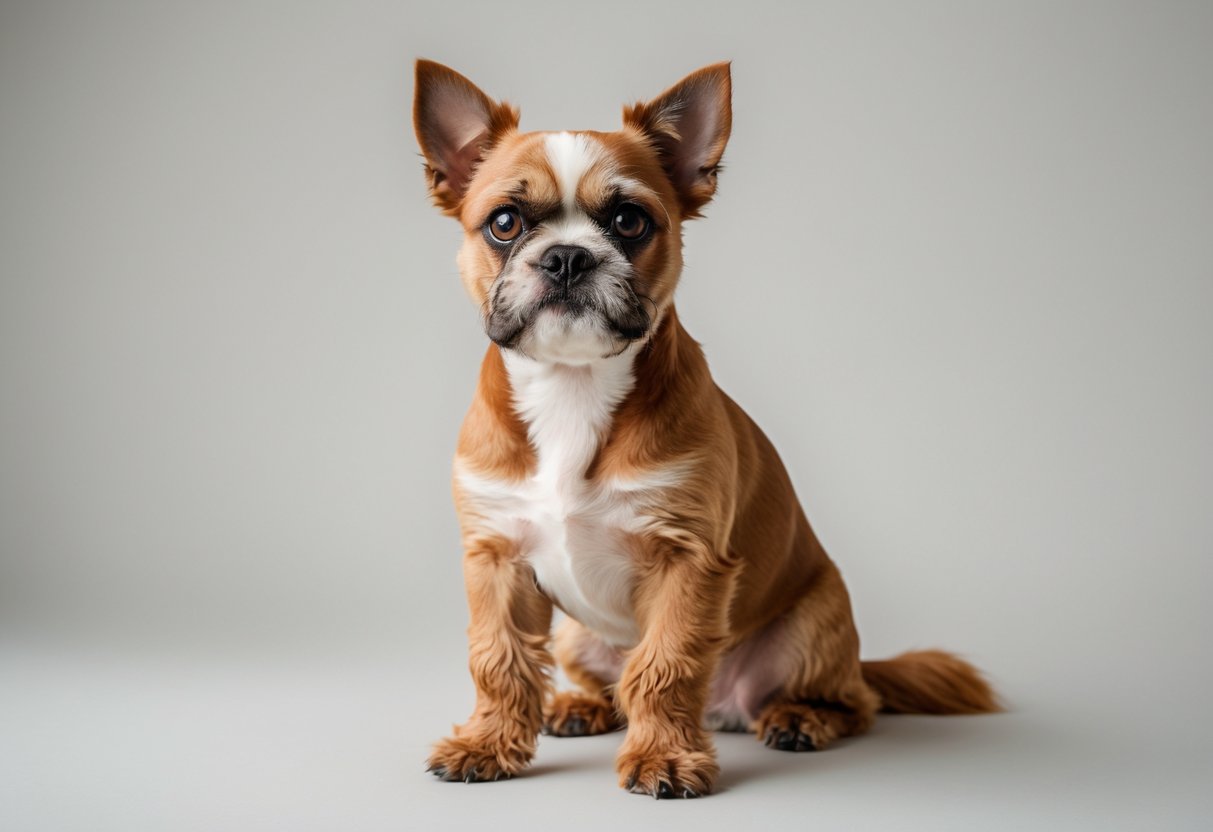
The Brussels Griffon is a small dog with a big personality. He is known for being very attached to his owner and can show strong loyalty. His intelligence makes him both charming and sometimes stubborn. Understanding his social needs and behavior helps create a smooth relationship.
Affectionate and Loyal Nature
This breed is often called a “velcro dog” because he sticks close to his family. He thrives on attention and enjoys being involved in daily activities. His affectionate nature makes him an excellent companion dog, eager to give and receive love.
He can become needy and insists on being the center of attention. Ignoring him might lead to demanding or mischievous behavior as he tries to get your focus back. Because of this, he does best in homes where he is not left alone for long periods.
Intelligence and Training Challenges
The Brussels Griffon is highly intelligent but can be stubborn. He tends to have a strong sense of self and may resist commands if he does not want to comply. Training requires patience and creativity.
Using positive reinforcement with treats and praise works best. Short, fun training sessions keep him interested. Early socialization is crucial to ensure he adapts well to new people and pets, reducing potential behavior problems later.
Interactions with Families and Other Pets
He generally gets along with other animals but may not realize how small he is. This sometimes causes him to challenge bigger dogs, so careful introductions and supervision are important.
He is not usually a good match for families with young children. The Griffon prefers to be the center of attention and may feel jealous or stressed around noisy or demanding kids. However, he bonds closely with adult family members and thrives in calm, affectionate homes.
Brussels Griffon Puppies
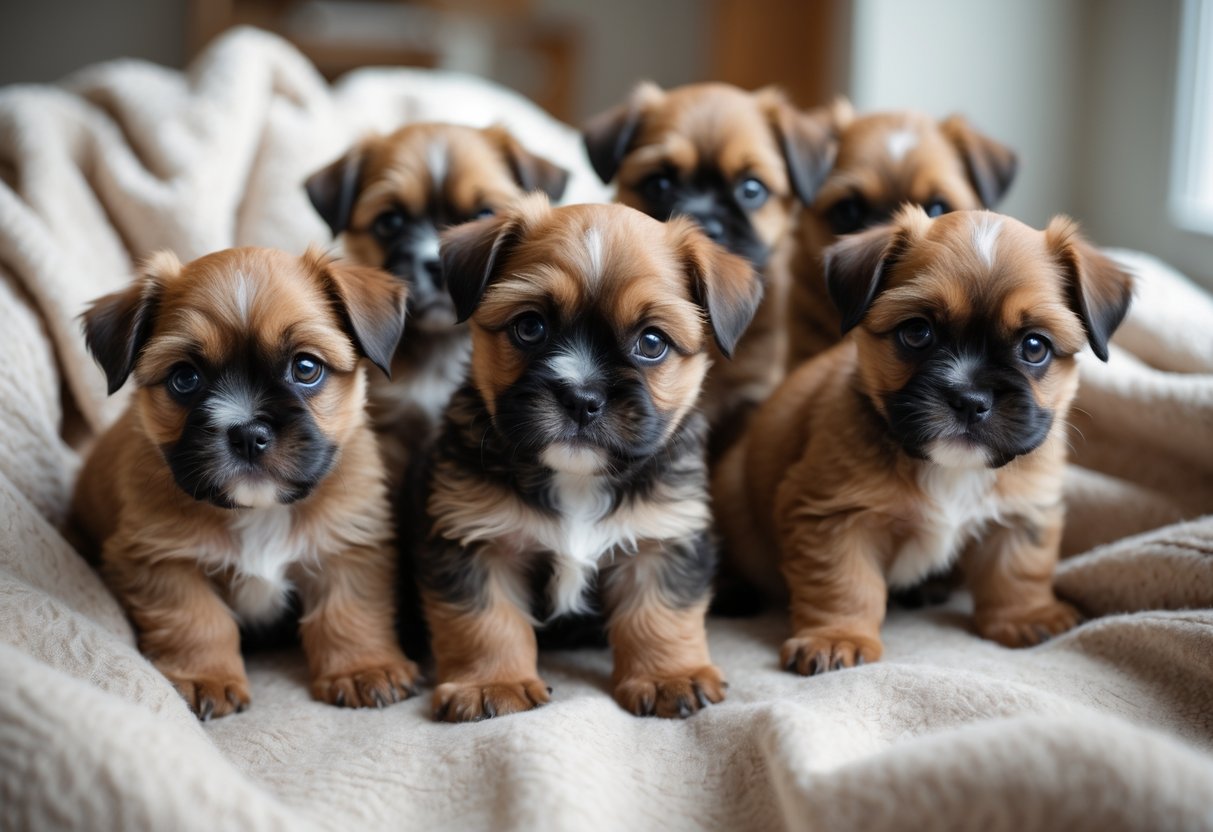
Brussels Griffon puppies have a unique look and a lively personality. They need careful selection from trusted sources and proper early care. Their growth depends on attention to health, training, and social experiences.
Choosing a Reputable Breeder
Finding a good breeder is important when getting a Brussels Griffon puppy. A reputable breeder will provide puppies registered with the AKC (American Kennel Club) to ensure quality and purebred lines.
Buyers should ask for health records and proof of vaccinations for the puppy and its parents. Reputable breeders allow you to meet the puppy’s mother and see the living conditions. This helps confirm the puppies are raised in a clean, caring environment.
It is best to avoid breeders who cannot provide documentation or do not answer questions clearly. A good breeder also screens buyers to ensure each puppy goes to a suitable home.
Puppy Care and Early Socialization
Brussels Griffon puppies require regular feeding with high-quality dog food made for small breeds. Early socialization is key to help the puppy grow into a friendly and confident adult dog. They should be introduced gently to new people, sounds, and other animals.
Basic training, like potty training and simple commands, should start early for good behavior. Handling puppies often helps them get used to grooming, which is necessary for their coat.
Vaccinations and health checks must be up to date to prevent illness. Providing a safe and nurturing environment supports both physical and emotional development during this stage.
Growth and Development
Brussels Griffon puppies grow quickly but slowly compared to larger breeds. Most reach full size between 10 to 12 inches tall and weigh 8 to 12 pounds.
During the first year, their bones and muscles strengthen, and mental abilities improve. Regular gentle exercise supports muscle tone without strain.
Puppies will shed some puppy fur as their adult coat grows in. Grooming depends on the coat type, which can be rough or smooth.
Owners should watch for any signs of health issues and maintain regular vet visits to keep the puppy healthy as it matures.
Care and Grooming
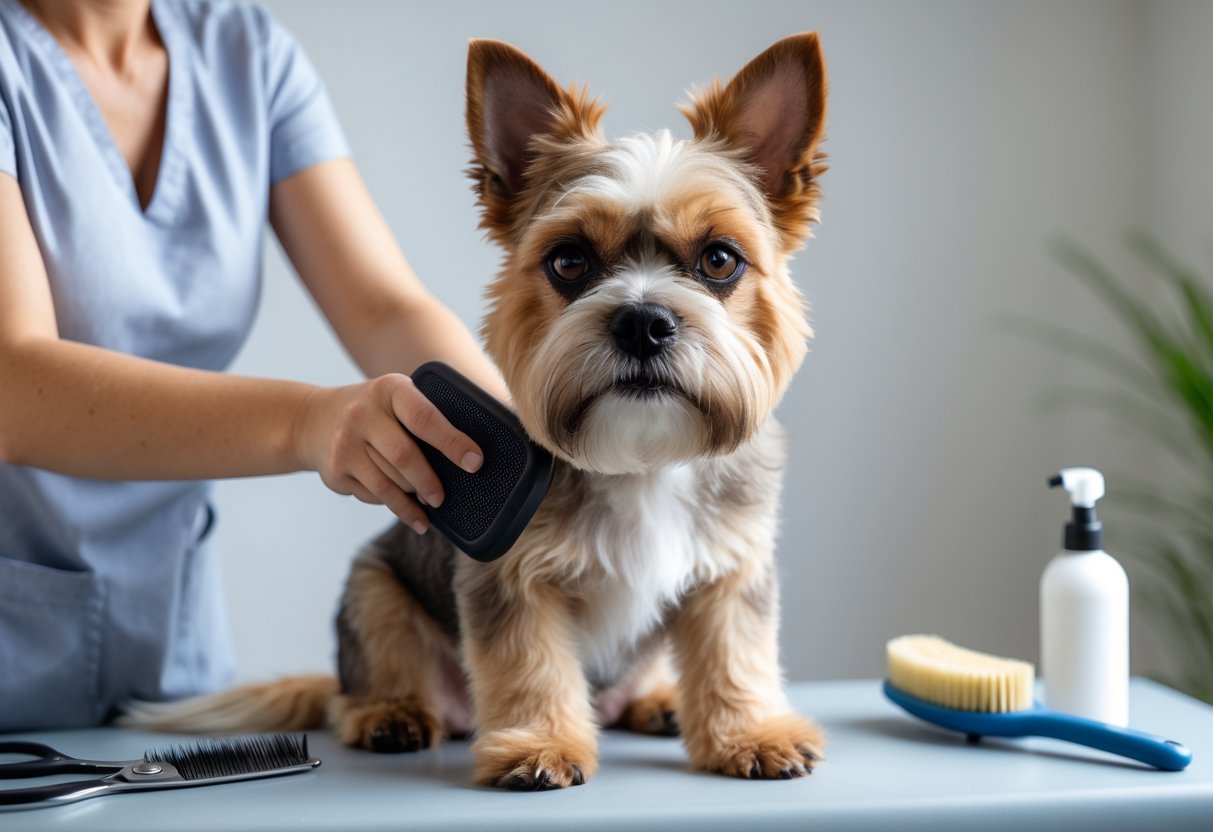
Brussels Griffons have different needs based on their coat type, diet, and health. Proper grooming keeps their coat healthy and comfortable. Good nutrition supports their energy and overall well-being. Regular health checks help catch problems early and keep them active.
Grooming Needs by Coat Type
There are two coat types for Brussels Griffons: rough and smooth. The rough coat needs more work. It requires regular stripping or hand-plucking every few weeks to remove dead hair. A medium-toothed comb, bristle brush, and thinning scissors are helpful tools. The goal is a natural look, not a tight trim.
The smooth coat is easier to care for. It needs weekly brushing with a natural bristle brush. Trimming around the toes and tail with curved scissors keeps the coat neat. Both coat types benefit from baths every 4 to 6 weeks.
Cleaning ears and trimming nails are important parts of grooming for either type.
Nutrition and Feeding Advice
Brussels Griffons are small companion dogs with moderate energy needs. They require balanced meals rich in protein to support their lively nature. Look for dog foods with named meat sources as the first ingredient.
Portion control is important because they can gain weight easily. Split their daily food into two or three small meals.
Fresh water should always be available. Avoid feeding human snacks or foods that can upset their stomach or cause allergies.
Supplements like omega-3 fatty acids may help maintain a shiny coat and healthy skin.
Routine Health Maintenance
Regular health checks keep Brussels Griffons comfortable and alert. Tooth brushing a few times a week helps prevent dental disease common in small breeds.
Nail trimming should be done every 3 to 4 weeks to prevent overgrowth and discomfort. Check ears weekly for signs of infection or dirt buildup.
Vaccinations, parasite control, and yearly vet visits are essential to detect any health issues early. Monitoring their weight and energy level also helps spot problems.
Exercise and mental activity support their physical health and well-being.
Exercise and Training
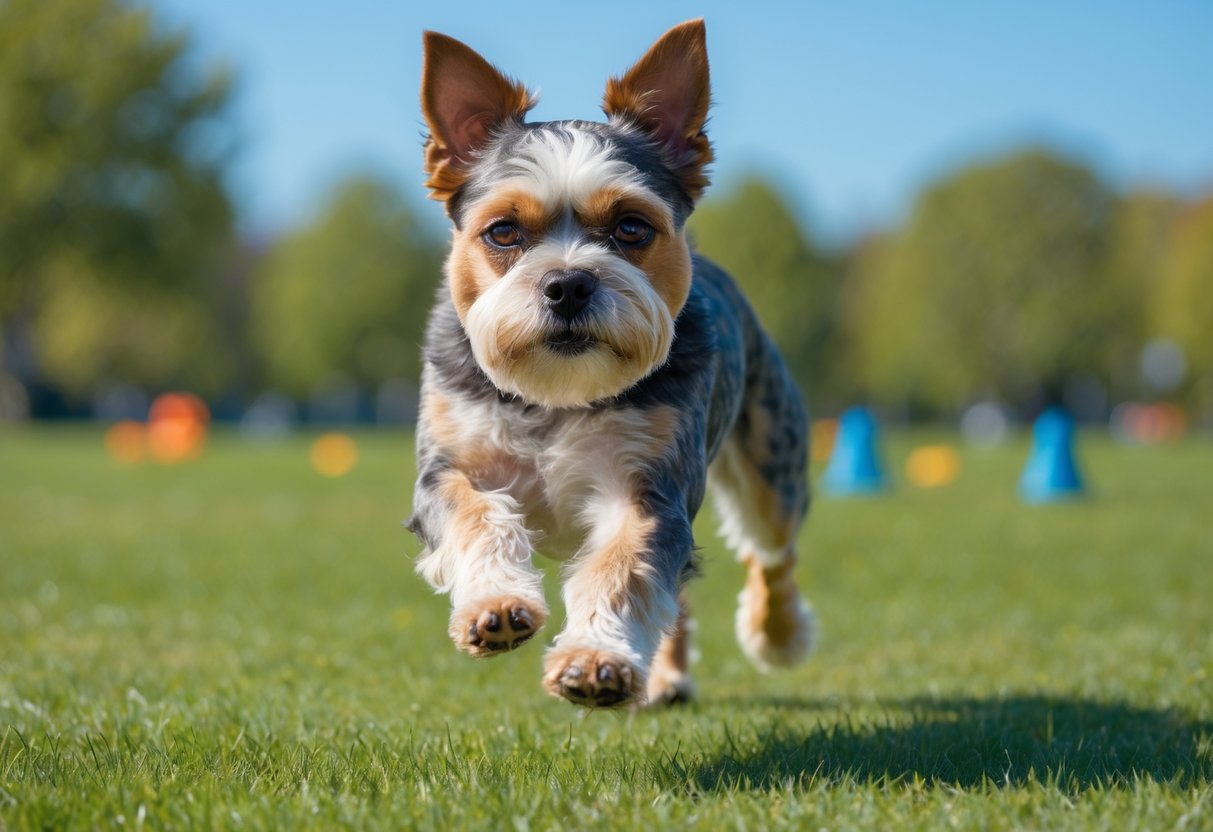
The Brussels Griffon needs a balanced mix of physical exercise and mental work tailored to its size and energy. Exercise routines should prevent boredom while avoiding overexertion. Training should focus on clear communication and positive motivation to build good habits and a strong bond.
Daily Activity Requirements
These dogs usually need about 30 to 45 minutes of daily exercise. This can be split into two or three short walks, keeping each session moderate to avoid strain. Apartment living is possible as long as the dog gets enough outdoor activity and playtime indoors.
Play sessions with toys or light games can add variety. Owners should watch for signs like heavy panting or slowing down, which mean the dog needs a break. Older Griffons benefit from gentler activities like short walks and low-impact play to protect joints.
Positive Reinforcement Methods
Using positive reinforcement is key for training a Brussels Griffon. Rewarding good behavior with treats, praise, or play motivates the dog and strengthens the owner-dog relationship. Harsh corrections should be avoided as they can cause fear or stubbornness.
Training sessions should be short and consistent, focusing on basic commands and gentle socialization. Early socialization helps the dog adapt well to people and other animals. It’s important to be patient and maintain regular practice for lasting results.
Mental Stimulation and Enrichment
Mental exercise is as important as physical activity for this intelligent breed. Puzzle toys, hide and seek, and obedience training help keep their minds sharp and reduce boredom. Bored dogs may develop destructive habits if not mentally engaged.
Indoor agility courses or interactive toys can be useful, especially in limited spaces like apartments. Changing walking routes or introducing new challenges also encourages curiosity. A wise owner tailors mental tasks to their dog’s preferences and adjusts as they age.
Health and Lifespan
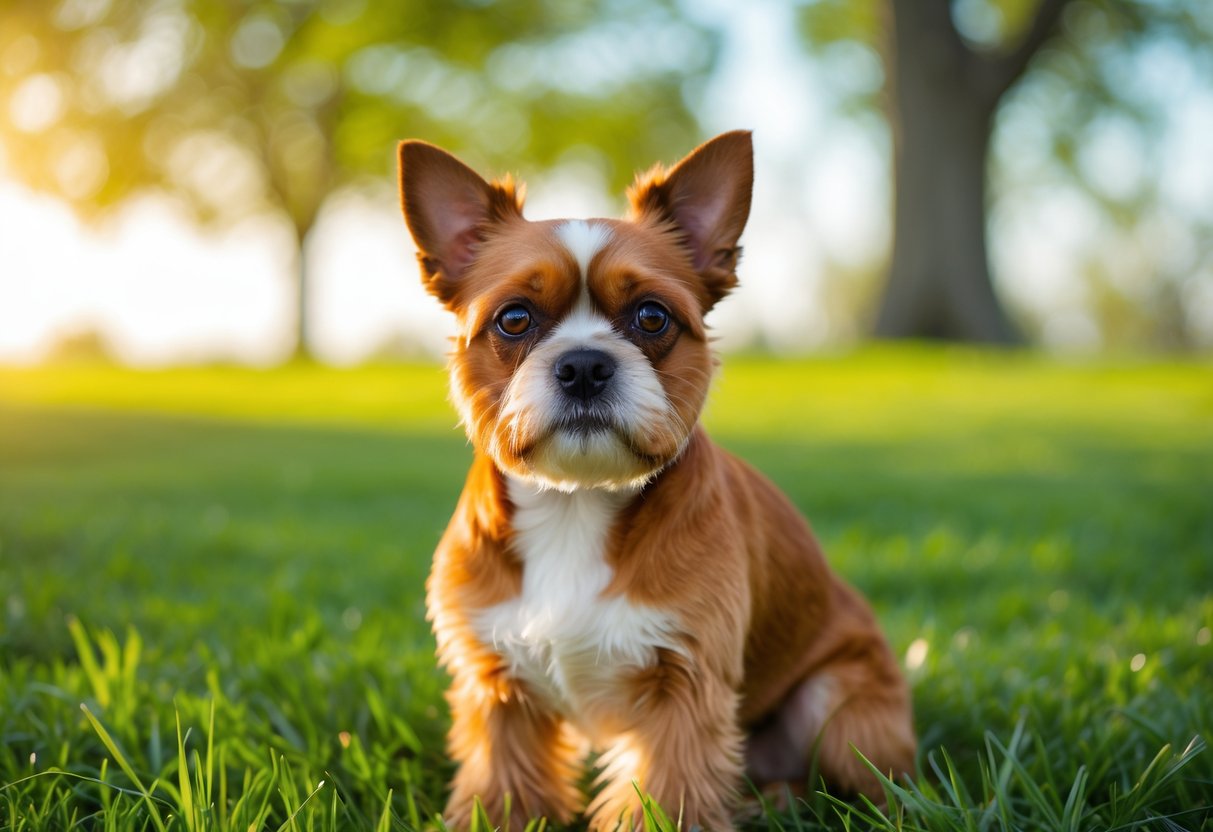
Brussels Griffons are generally healthy dogs but can face certain joint and eye conditions. Their small size offers some protection against severe joint problems. Proper care and regular vet check-ups help manage risks and keep them comfortable.
Patellar Luxation and Joint Issues
Patellar luxation happens when the dog’s kneecap slips out of place. This condition can cause pain, limping, or a skipping gait. Brussels Griffons are prone to this because of their small size and joint structure.
Mild cases often improve with joint supplements and anti-inflammatory medicine. Severe cases may require surgery to stabilize the kneecap and prevent arthritis. Owners should watch for limping or visible discomfort and seek veterinary advice promptly.
Keeping the dog at a healthy weight reduces pressure on joints. Regular gentle exercise can help maintain muscle strength, supporting joint health.
Hip Dysplasia and Other Concerns
Hip dysplasia is less common in Brussels Griffons than in larger breeds but can still occur. It involves an unstable hip joint that can lead to arthritis and discomfort over time.
Symptoms may be mild due to the dog’s small size but include stiffness or difficulty rising. Joint supplements and medication usually help manage symptoms. Surgery is rarely needed but may be an option in severe cases.
Other health concerns include eye problems like cataracts and dental issues. Their prominent eyes are prone to injuries, so regular eye checks are important. Proper dental care is necessary due to crowded teeth, which can lead to tartar buildup and gum disease.
Lifespan Expectations
Brussels Griffons typically live between 12 and 15 years. Good nutrition, regular exercise, and preventive veterinary care can support a longer, healthier life.
Environmental factors, genetics, and care quality influence lifespan. Owners should avoid exposing the dog to extreme heat or cold because of their flat face, which affects breathing and temperature regulation.
Routine health screenings help catch problems early, improving the dog’s quality of life. With proper care, many Brussels Griffons enjoy active, happy years well into their teens.
Is the Brussels Griffon Right for You?
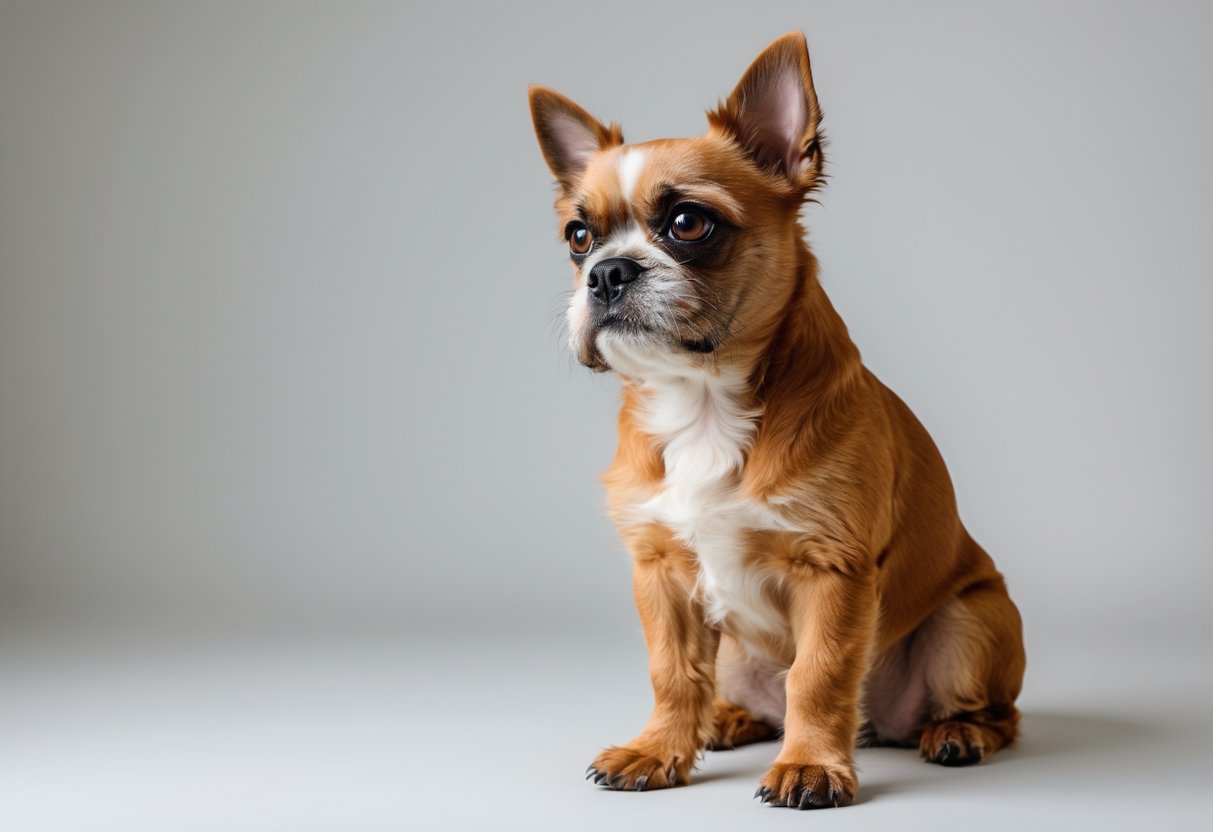
The Brussels Griffon is a small, lively dog that needs attention, care, and regular exercise. It suits owners who can offer interaction and training. Not every home or person is the best match for this breed, so certain lifestyle and experience factors matter.
Suitability for Apartment Living
The Brussels Griffon is well-suited for apartment living due to its small size and low need for space. It typically weighs 8-10 pounds and stands 7-10 inches tall, which means it can comfortably live in compact areas.
This breed needs daily exercise like walks and playtime to stay healthy and happy. It tends to be active indoors and enjoys interactive games. Since it is alert, it can react to noises, so training helps manage barking in close quarters.
Regular mental stimulation is also important. Without enough activity, the Brussels Griffon may develop boredom or nervous energy. Its size and moderate exercise needs make it a good companion dog for city dwellers who can dedicate time each day.
Family Compatibility
The Brussels Griffon forms strong bonds with its family members and generally does well with children. It is affectionate and loyal, often seeking close contact with its owners.
However, this breed’s energy and playfulness mean it suits families with children old enough to respect its small frame. Rough handling could hurt such a small dog.
It also gets along well with other pets when socialized early. Families that want a companion dog who enjoys interaction and attention often find the Brussels Griffon a good match.
Those with very young kids or large, high-energy dogs may want to reconsider or plan careful introductions.
Considerations for First-Time Owners
For first-time dog owners, the Brussels Griffon can be a rewarding choice but demands commitment. It needs consistent training and positive reinforcement to manage its lively nature.
The breed’s intelligence helps with learning commands, but patience is required due to bursts of stubbornness or excitement. Early socialization with people and other animals is important.
Regular grooming and attention to health issues like breathing problems are essential. First-time owners should be ready for daily care, exercise, and mental engagement.
A willingness to spend quality time and follow a structured routine makes the Brussels Griffon a manageable and affectionate companion for new dog owners.
Frequently Asked Questions
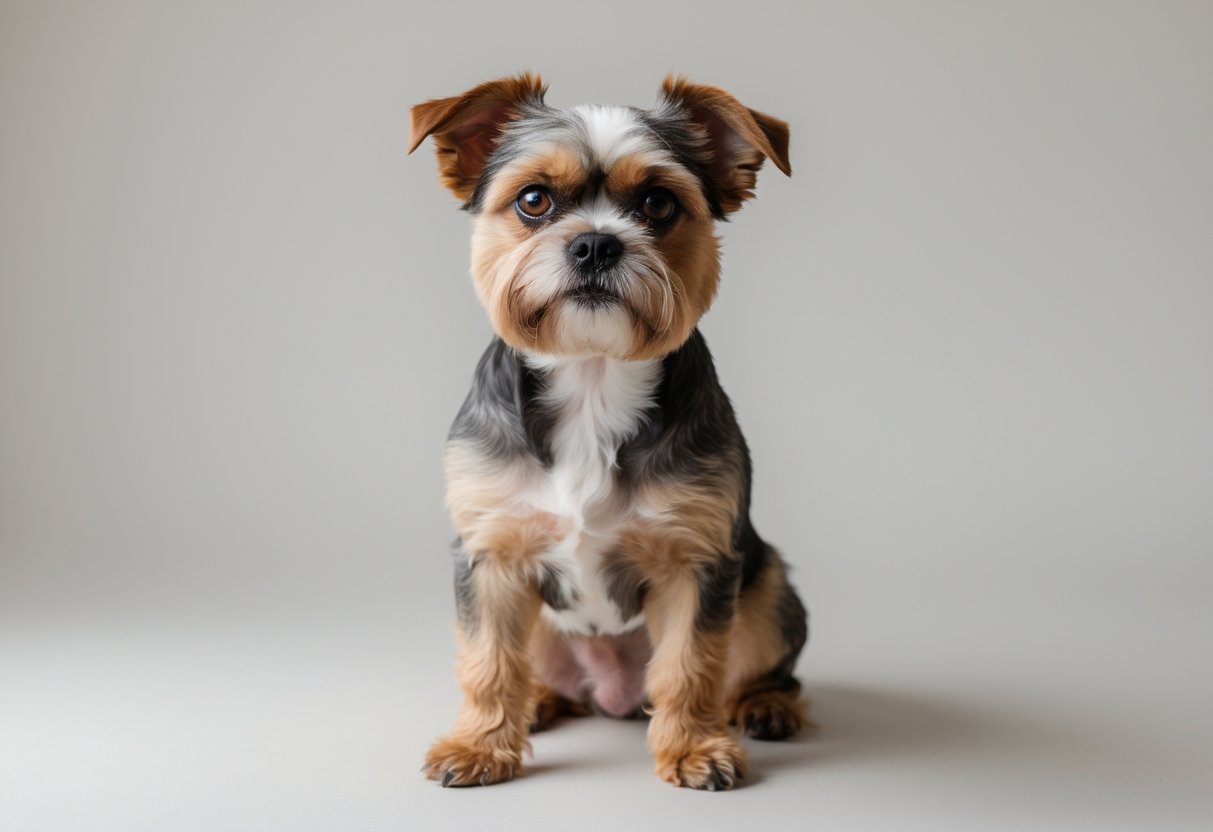
The Brussels Griffon is known for its strong personality and unique looks. Its care involves regular grooming and attention to health. Understanding its lifespan, cost, and breed variations helps owners prepare for a positive experience.
What is the typical temperament of a Brussels Griffon?
Brussels Griffons are affectionate and alert. They are loyal to their owners and enjoy being the center of attention. This breed is playful but can sometimes be stubborn.
How long do Brussels Griffons usually live?
They typically live between 12 and 15 years. With good care, including regular exercise and proper diet, they can reach the higher end of this range.
What are the grooming requirements for a short-haired Brussels Griffon?
Short-haired Brussels Griffons need weekly brushing to remove loose hair. Regular ear checks and nail trims are important to maintain overall health.
What is the average price range for a Brussels Griffon puppy?
The price for a Brussels Griffon puppy generally ranges from $1,500 to $4,000. Costs vary by breeder, location, and lineage quality.
Are there different breeds or mixes within the Brussels Griffon category?
There are two coat types: rough and smooth. The breed may also be mixed with other small breeds, but purebred Brussels Griffons have distinct features recognized worldwide.
How should one care for a Brussels Griffon’s health and wellness?
Regular veterinary visits, balanced diet, and daily exercise are essential. Dental care and preventive treatments for parasites support long-term health. Attention to weight control can prevent many health problems.
